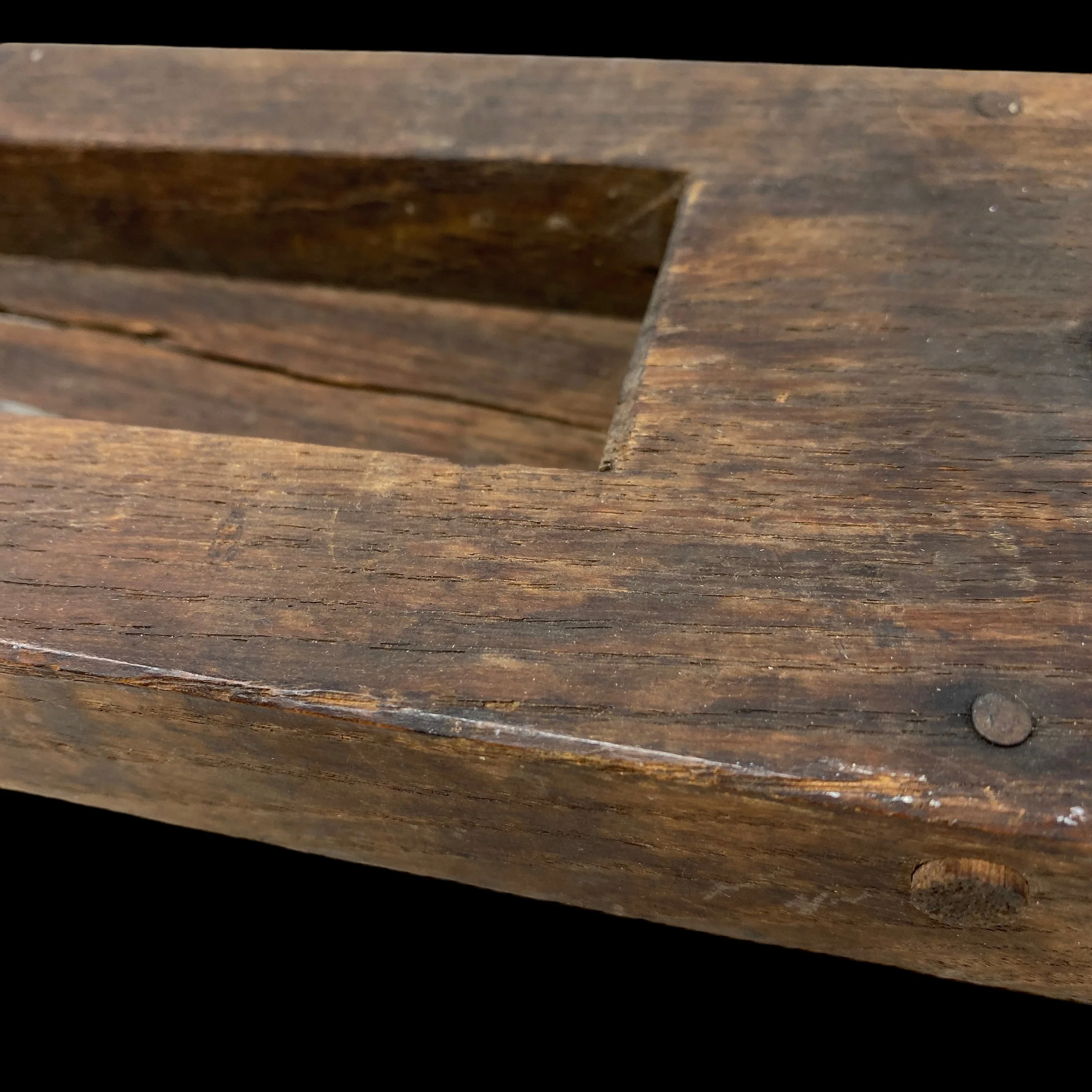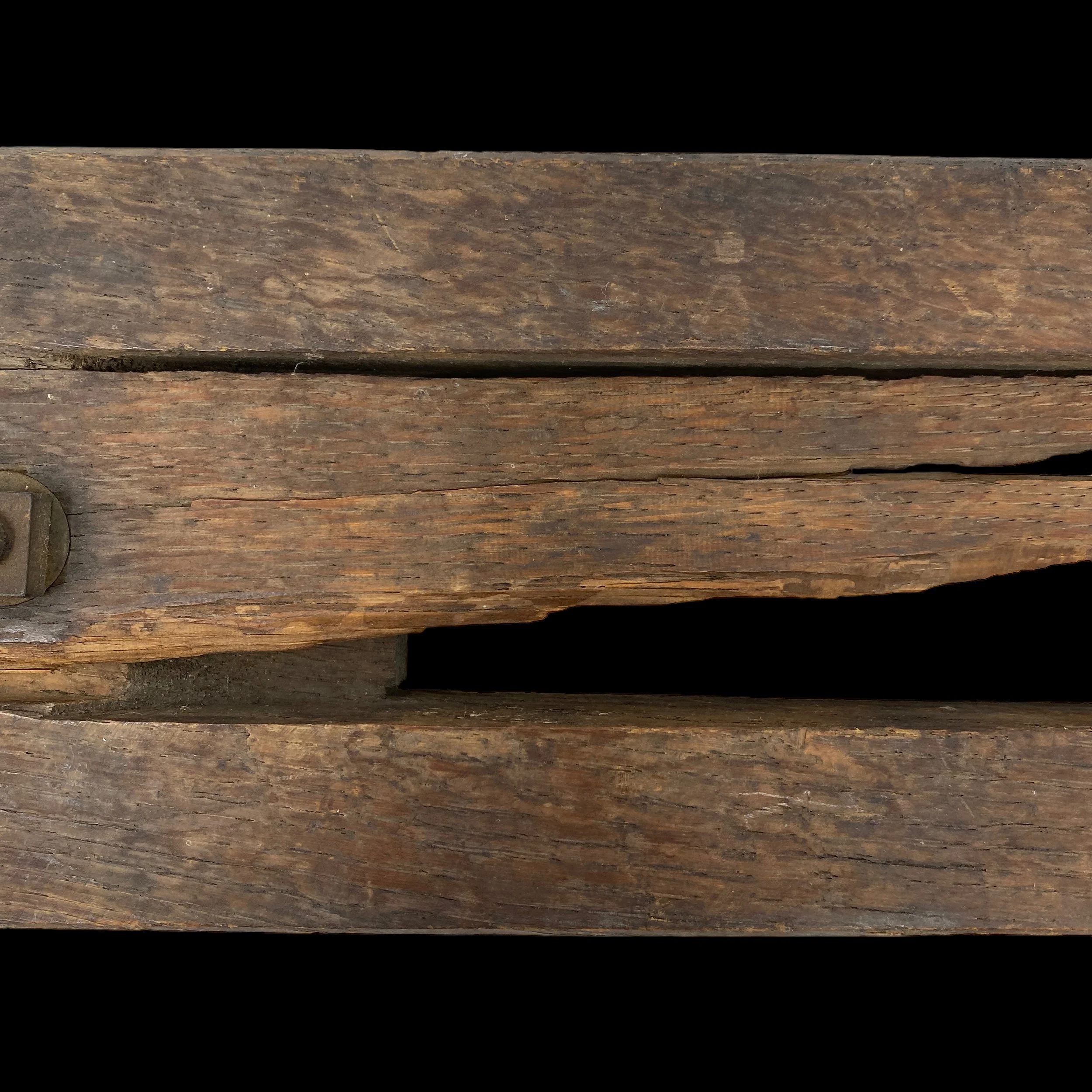RARE! WWI American Expeditionary Force Western Front Trenches Battle Damaged Soldier's Gas Attack Alarm Rattle



























RARE! WWI American Expeditionary Force Western Front Trenches Battle Damaged Soldier's Gas Attack Alarm Rattle
Comes with hand-signed C.O.A.
This incredibly rare and museum-grade WWI wooden A.E.F. bringback battlefield damaged gas alarm rattle was used in the frontline trenches on the Western Front of World War I to warn soldiers of incoming German gas attacks. This original WWI gas rattle shows incredible wear and use on the frontline battlefield.
The gas alarm rattle was a simple wooden device that made a loud rattling noise when spun around. It was used to alert soldiers to the presence of gas in the air, giving them enough time to put on their masks before the gas could cause damage. The rattle was also used to alert soldiers to incoming artillery or gas attacks, giving them time to take cover.
The wooden gas alarm rattle was a vital tool for soldiers during World War I. It was lightweight, easy to carry, and could be used by anyone regardless of rank or position. Soldiers would carry the rattle with them at all times and would spin it around periodically to check for the presence of gas. If gas were detected, the rattle would be spun faster and more urgently, alerting nearby soldiers to the danger.
While the wooden gas alarm rattle was a simple tool, it was incredibly effective. It allowed soldiers to quickly detect the presence of gas and take the necessary precautions to protect themselves. It was a key part of the battle against gas attacks and helped to save countless lives.
“Gas!” This lone word could strike fear and panic into the most stoic doughboy in the American sector of the Western Front. By the time the American Expeditionary Forces (AEF) arrived in France, the use of poison gas was commonplace by the Allies and Central Powers alike. By the war’s end, an estimated 1.2 million gas casualties had been suffered on all sides – over 90,000 of these were fatal. Soldiers developed several ways to warn their fellow doughboys of inbound gas. Whenever the hiss of a gas cylinder or the explosion of a shell was heard, a lookout would yell “gas!” to everyone in earshot. To communicate the warning up and down the lines, everything from church bells to air horns was used. Eventually, the men found that klaxon horns and wooden alarm rattles worked best. Alarm rattles were preferable because they were lightweight, easy to carry, and had a simple design. The rattle whipped the device overhead, which caused a loud whirring sound. This gas alarm is still fully operational and in full working order.
Gas Attacks During WWI:
The use of gas attacks during World War I was a brutal and devastating tactic employed by both the Allied and Central Powers. It was a weapon that caused immense suffering to those who were exposed, and one that left a lasting impact on the soldiers who fought in the trenches. The American Expeditionary Force (AEF) soldiers, who arrived in Europe later in the war, were no exception to this.
At the beginning of the war, gas attacks were relatively uncommon. However, as the war progressed and each side looked for new ways to gain an advantage, gas attacks became more prevalent. The first large-scale use of gas occurred in April 1915, when the Germans released chlorine gas at the Battle of Ypres. This gas, which was heavier than air, sank into the trenches and caused horrific injuries to those who were exposed. The gas attacked the respiratory system, causing a painful and often deadly drowning sensation. Those who survived the initial attack were left with permanent lung damage and other long-term health problems.
The use of gas attacks was not limited to the Germans. In fact, both sides employed gas as a weapon throughout the war. In 1917, the British introduced mustard gas, a gas that caused severe burns to the skin and eyes. The Americans, who joined the war effort in 1917, were also exposed to gas attacks. The first American gas attack occurred on October 23, 1917, when the Germans released gas on American troops near Verdun.
The gas attacks were not only physically devastating but also psychologically traumatizing. Soldiers who survived gas attacks often suffered from nightmares, anxiety, and other psychological conditions. They were also haunted by the memories of their comrades who were killed in the attacks. The use of gas attacks was not only a weapon of war but also a weapon of terror.
Despite the horrors of gas attacks, soldiers on both sides developed ways to protect themselves. Gas masks were developed to filter out the deadly gases, and soldiers were trained to put on their masks quickly when an attack was imminent. However, gas masks were not foolproof, and soldiers still suffered injuries even while wearing them.
The AEF soldiers faced particular challenges when it came to gas attacks. They arrived in Europe later in the war, and by that time, both sides had developed more advanced gas weapons. The AEF soldiers were also relatively inexperienced compared to their European counterparts, who had been fighting for years. However, the AEF soldiers quickly adapted and developed their own techniques for surviving gas attacks.
One such technique was the use of a gas alarm, which was a simple device that could be set off when gas was detected. The alarm would sound, alerting soldiers to put on their gas masks. The AEF soldiers also learned to move quickly when they heard the sound of gas canisters being opened. This allowed them to put on their gas masks before the gas reached them.
Despite these innovations, gas attacks remained a constant threat to the AEF soldiers. During the Meuse-Argonne Offensive, which was the largest battle fought by the AEF in World War I, gas attacks were a frequent occurrence. The soldiers were constantly on edge, waiting for the next attack. They also had to contend with other dangers, such as snipers and artillery fire.
The AEF soldiers who survived gas attacks were left with lasting physical and psychological scars. Many suffered from lung damage and other health problems for the rest of their lives. Others were haunted by the memories of the gas attacks and the loss of their comrades.
The use of gas attacks during World War I was a brutal and devastating tactic that left a lasting impact on the soldiers who fought in the trenches. The AEF soldiers, who arrived in Europe later in the war, faced particular challenges when it came to gas attacks.